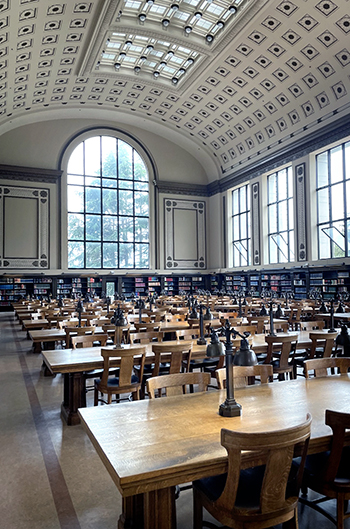Better understanding of charging options for electric trucks

When Noah Eriksson Tewolde Berhane arrived in Berkeley this summer for an eight-week internship, he expected to work on making electric vehicles up to 30 percent more energy-efficient as part of the NEXTCAR research project. Instead, his focus shifted to charging stations for electric trucks, a subject the KTH student now knows a lot about.
A dozen students from Sweden and California swapped places during the summer of 2024 for an internship focusing on digital transformation. This marked the beginning of a new exchange between KTH and the University of California, Berkeley, centred on digital transformation.

One of the KTH students who traveled to the United States was Eriksson Tewolde Berhane. He had to quickly change his plans when Berkeley professor Scott Moura determined there wasn’t enough work within the NEXTCAR project.
Better charging options needed
Electric vehicles remained the focus, however. Eriksson Tewolde Berhane spent his first week collecting charging data from electric cars. Data from the car batteries, such as temperature and voltage during charging, were recorded. As the car drove down steep hills, data was collected to analyze battery behavior in what is known as regeneration mode, where the battery is charged through engine braking.
Starting in the second week, Eriksson Tewolde Berhane began working on the project that would occupy him for the rest of the summer. His task was to model the power delivered by a charging station when charging electric trucks, a research project that is part of the larger initiative HEVI-LOAD.
"The U.S. government wants to increase the use of electric trucks across the country, but this requires new high-power fast chargers, which place a strain on the power grid. HEVI-LOAD aims to optimize the expansion of charging infrastructure, considering both costs and grid stability," Eriksson Tewolde Berhane says.

Internship offers insight into doctoral studies
Eriksson Tewolde Berhane’s work involved simulating a charging station with multiple charging points for electric trucks. He used data on the trucks’ batteries, arrival times, battery charge levels upon arrival, and how much they wanted to charge. Machine learning was then used to predict the vehicles’ charging curve based on battery information. The goal was to better understand what a charging station might look like, which could eventually provide insights into how to develop a more stable charging infrastructure on a larger national scale.
So, how did it go? Eriksson Tewolde Berhane says the work progressed well. He had the opportunity to present what he had done to professors and doctoral students working on HEVI-LOAD, and they seemed positive. It was an enjoyable experience.
What do you take with you from your time as an exchange student? Is it something you would recommend?
"I’ve learned a lot about the subject I worked on. This is the first time I’ve been able to use my engineering skills to solve a real problem outside of school, which felt great. I can highly recommend it, especially for people considering pursuing a Ph.D. I think an internship like this provides valuable insight into what it might be like," Eriksson Tewolde Berhane says.
Eriksson Tewolde Berhane adds that being an exchange student is generally a valuable experience for most people. He believes one grows significantly as a person by adapting and becoming comfortable in a new country.
Text: Peter Asplund
